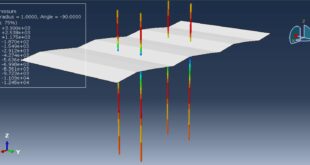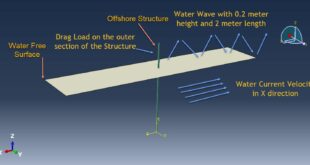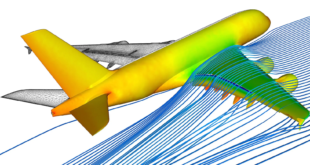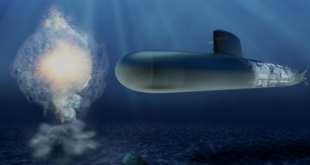In this tutorial the explosion simulation near the reinforced concrete wall with green composite-SPH method- has been investigated. The TNT part is modeled as a three-dimensional solid part. The concrete wall or slab is modeled as three-dimensional solid part, the green composite part with eight layers is modeld as three-dimensional shell part. You can see a figure of the assembled parts below
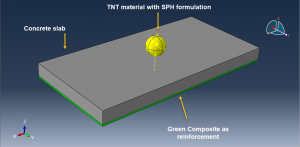
The growing threat that terrorism has meant for the safety ofcitizens and institutions, has made that the studies of struc-tures under high impact and explosion is no longer restrictedonly to the military scope. The dramatic increase in computation efficiency over the last three decades has made the finite-element simulation approach the dominant tool for investigating blast phenomena and their effects on building structures
The strength and stiffness coupled with lightweight characteris-tics are the striking features of composites for their widespread applications in the manufacturing sector. Non-toxic nature, dura-bility, chemical and corrosion resistance, compact tolerance, design flexibility, low-cost, and eco-friendly nature are the other attractive characteristics of composites that motivated researchers to use this material in diverse applications. Due to the increasing environmental concern, the research motivation and focus shifted towards the development of green composites
To model TNT behavoiur, the JWL material model is used. The Jones-Wilkins-Lee (or JWL) equation of state models the pressure generated by the release of chemical energy in an explosive. This model is implemented in a form referred to as a programmed burn, which means that the reaction and initiation of the explosive is not determined by shock in the material. Instead, the initiation time is determined by a geometric construction using the detonation wave speed and the distance of the material point from the detonation points
To model concrete behaviour Johnson-Holmquist or Concrete Damaged Plasticity can be used to determine the damage during the wave impact
To model composite material, the elstic model with Hashin damage criterion is selected. The dynamic explicit step and general contact alghorithm are suitable for this type of analysis. The tie constraint is consider between the green composite and concrete wall. The msh should be fine to obtain the better results. you can see some figures for the results below
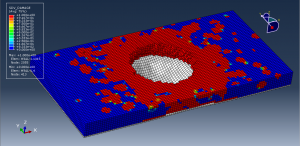
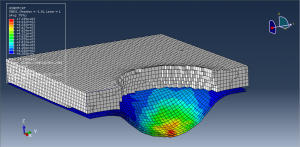
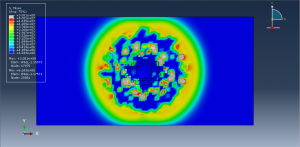
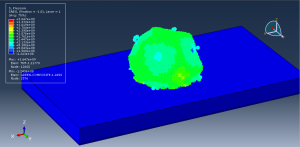
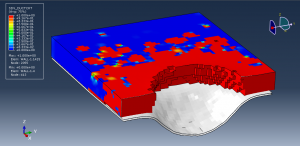
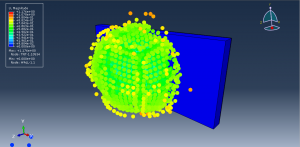
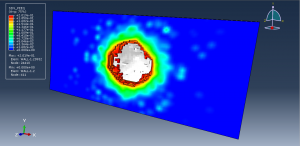
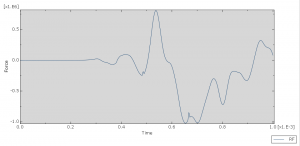
You can provide CAE ,INP,and English video files of this simulation here. The cost of these files is Twenty-Six Euros. you can click on the bellow bottom to beginning process
You can purchase the tutorial through a PayPal account, a Visa, or a Master card, just before payment,send me an email to this address: karampourp@gmail.com
 Abaqus tutorials Abaqus tutorials
Abaqus tutorials Abaqus tutorials
